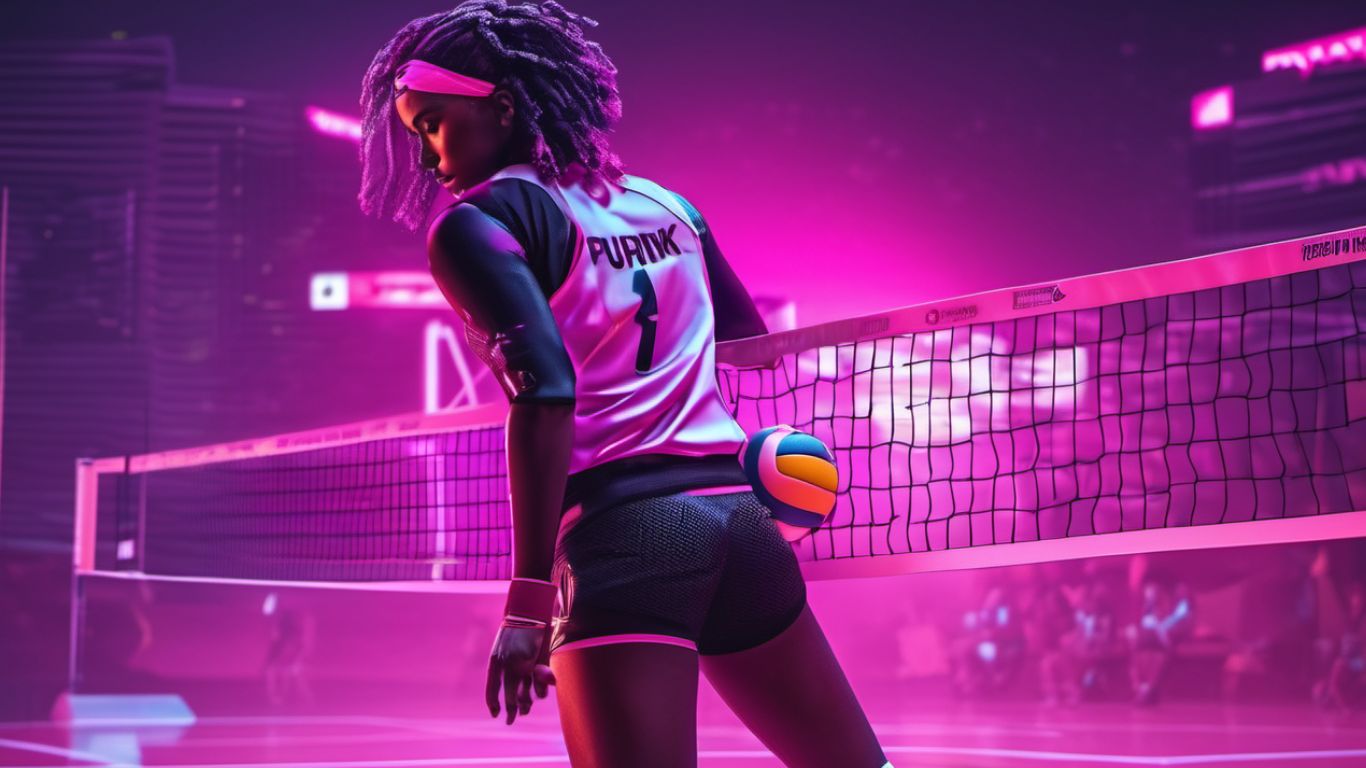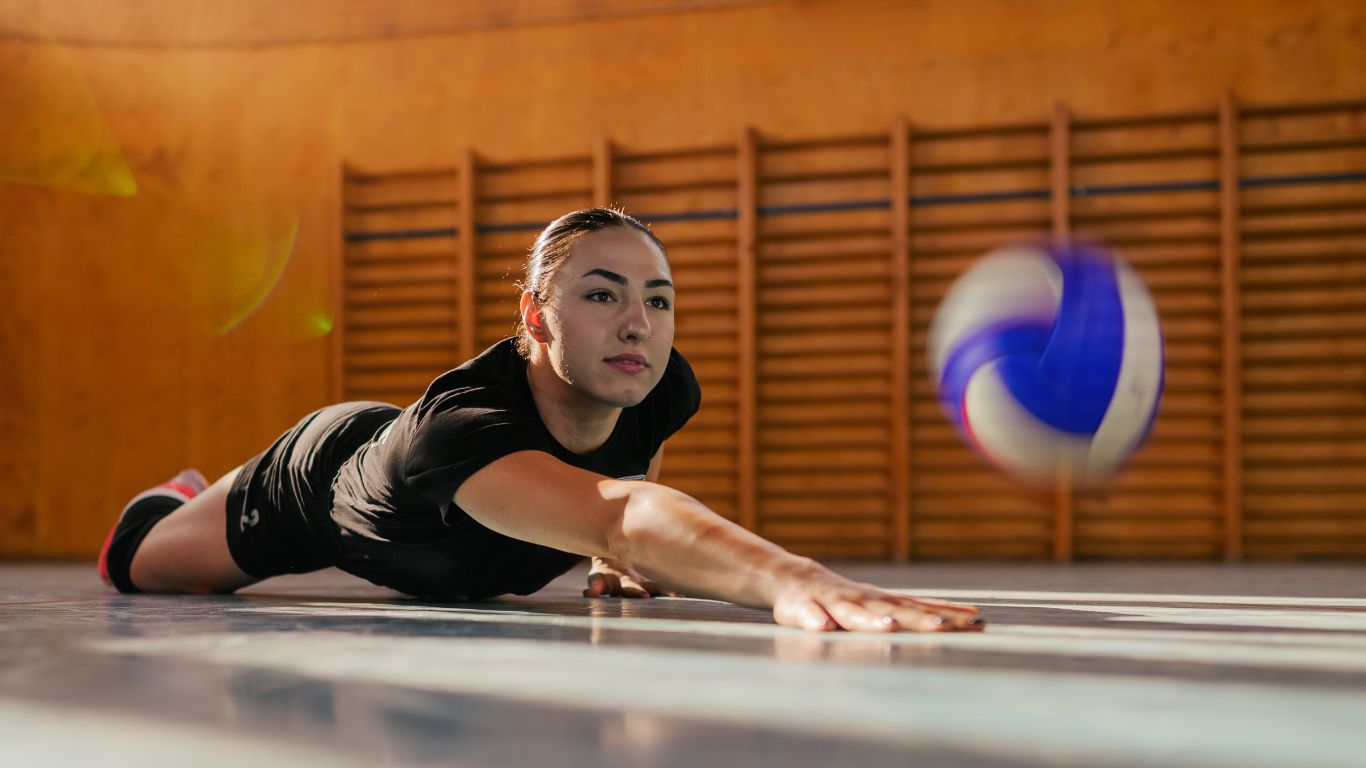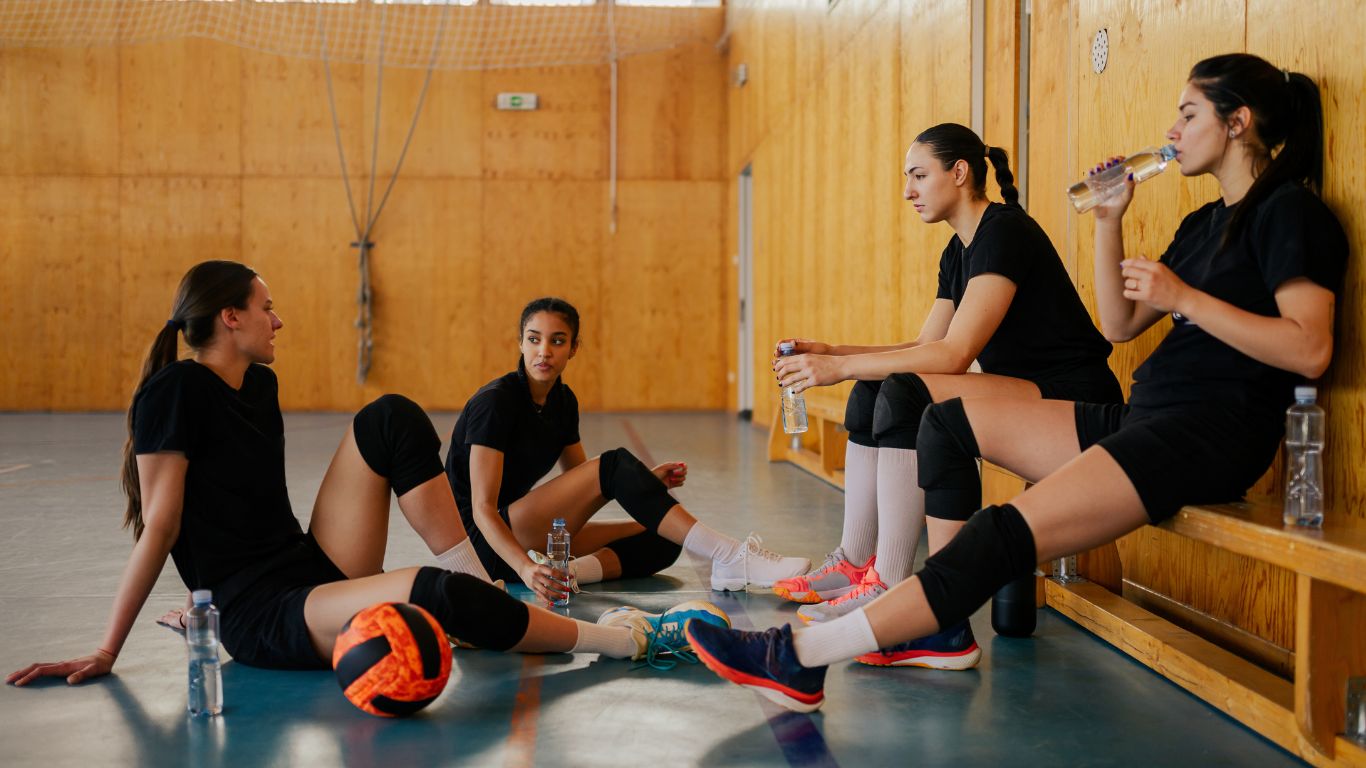Volleyball setting drills improve players’ accuracy and technique in setting the ball. Volleyball setting drills are crucial for improving a player’s setting skills by focusing on accuracy and technique.
These drills help players develop the ability to consistently deliver precise and stable sets to their teammates. Good setting is essential in volleyball as it allows for effective attacks and helps maintain momentum during a game. By incorporating various drills that emphasize footwork, hand positioning, and coordination, players can enhance their ability to set accurately and efficiently.
This article will explore different types of volleyball setting drills that can be implemented during practice sessions to enhance players’ setting skills and contribute to the overall success of the team.

Credit: www.facebook.com
The Basics Of Volleyball Setting
Volleyball setting is a crucial skill that every team needs to master in order to succeed on the court. A setter plays a pivotal role in setting up their teammates for powerful attacks and scoring points. In this section, we’ll delve into the basics of volleyball setting, including the role of the setter and key techniques for successful setting.
Understanding The Role Of The Setter
As the name suggests, the setter is responsible for setting up their teammates for an attack. Their main role is to receive the ball after a pass and deliver a precise and well-timed set to a hitter, giving them the best possible chance to score. The setter must have exceptional game awareness and make split-second decisions based on the positioning of their teammates and the opponents.
But that’s not all – the setter must also be an effective communicator, constantly directing their teammates and calling plays. They are like the quarterback of a football team, directing the flow of the game and ensuring everyone is on the same page.
Key Techniques For Setting
Setting is a skill that requires both finesse and strength. Here are some key techniques that every setter should focus on:
- Hand positioning: The setter should form a triangular shape with their hands, using their fingertips to create a stable platform for the ball to be set.
- Footwork: Proper footwork is crucial for a setter to be able to move quickly and get into position to set the ball. They should focus on maintaining a balanced stance and quick, precise movements.
- Timing: Timing is everything when it comes to setting. A setter must have an impeccable sense of timing to ensure that their set is delivered at the perfect moment, allowing the hitter to execute a powerful attack.
- Accuracy: A good setter must be able to place their sets accurately, taking into account the hitting position of their teammates and the positioning of the opponents. This requires a combination of hand-eye coordination and spatial awareness.
Mastering these key techniques takes time and practice. A setter should dedicate ample time to drills and repetition to fine-tune their skills and improve their setting abilities.
Importance Of Setting In Volleyball
Volleyball setting drills play a crucial role in improving a player’s ability to achieve precise and effective sets. These drills enhance a player’s hand-eye coordination, decision-making skills, and overall control in the game, contributing to successful team performance.
Setting As A Game-changing Skill
Setting is a game-changing skill in volleyball that plays a vital role in the success of any team. It involves accurately placing the ball near the net, setting up opportunities for powerful attacks and strategic plays. A good setter possesses the ability to quickly assess the situation, make split-second decisions, and deliver precise sets to their teammates. Without proficient setting, a team’s offensive and defensive capabilities can be severely hindered.
Impact On Team Performance
The impact of setting on team performance cannot be overstated. Effective setting allows for a smooth and efficient flow of the game, enabling attackers to make strong, well-timed hits, and creating scoring opportunities. A well-set ball gives hitters the advantage of a higher trajectory, enabling them to target vulnerable spots on the opponent’s court and increase their chances of scoring. On the defensive end, accurate setting enables players to effectively block and dig spikes, preventing the opposing team from gaining an advantage.
Moreover, setting is crucial for maintaining team morale and cohesion. A well-set ball not only boosts the confidence of attackers, but it also enhances the trust and synergy among teammates. Players know they can rely on the setter to deliver consistent, dependable sets, fostering a sense of unity and camaraderie. This positive team dynamic not only improves performance in matches but also enhances overall team chemistry.
Mastering Precision In Volleyball Setting
In volleyball, precise setting is crucial to ensuring successful plays and gaining an advantage over the opponents. Mastering precision in volleyball setting requires a focus on consistent hand placement, timing, and location. Implementing targeted drills can significantly enhance a player’s setting accuracy and control on the court.
Developing Consistent Hand Placement
Consistent hand placement is fundamental to achieving precision in volleyball setting. Players should focus on maintaining a firm, yet flexible grip on the ball while positioning their hands to guide the ball’s trajectory with accuracy. Utilizing drills that emphasize proper hand positioning and movement can help players develop muscle memory and consistency in their setting technique.
Perfecting Timing And Location
Timing and location play pivotal roles in achieving precision in volleyball setting. Players must have a keen understanding of the ball’s trajectory and the intended target area. Utilizing targeted drills focusing on timing and location can help refine a player’s ability to deliver precise sets, ultimately contributing to a smooth and efficient offense on the court.
Essential Drills For Volleyball Setting
In order to excel in the game of volleyball, mastering the art of setting is essential. Setting, the tactical skill of positioning the ball for an attacking player, requires precision, accuracy, and quick decision-making. Whether you are a beginner looking to improve your setting skills or a seasoned player aiming to refine your technique, incorporating a variety of drills into your training routine is key. In this blog post, we will explore three categories of essential volleyball setting drills: solo setting drills, partner setting drills, and game-like setting drills.
While volleyball is a team sport, solo setting drills can help improve your individual setting skills. These drills allow you to focus on technique, footwork, and hand positioning without the pressure of coordinating with a partner. Here are a few effective solo setting drills to incorporate into your training regimen:
- Wall Toss Drill: Stand facing a wall and toss the ball against it. As the ball comes back, set it up to simulate a pass or an attack. This drill enhances hand-eye coordination and helps you practice setting with consistent height and placement.
- Chair Setting Drill: Set up a chair or an object of similar height in front of you. Practice setting the ball over the chair, ensuring it clears the obstacle. This drill improves accuracy and control by requiring you to set with precision.
- Footwork Drill: Start in a ready position and simulate receiving a pass or a dig. Practice moving quickly to the ball and setting it up with proper footwork. This drill helps develop agility and quickness, vital components of effective setting.
Incorporating partner setting drills into your training sessions allows you to develop communication and coordination with a teammate. These drills replicate game situations and foster trust and teamwork. Consider adding the following partner setting drills to your practice routine:
- Pass and Set Drill: Stand across from your partner and begin with a pass. After receiving the pass, quickly transition into a set to your partner. Focus on timing and synchronization to ensure a smooth and accurate set. Repeat the drill, alternating roles with your partner.
- Setting Accuracy Drill: Set up a designated target area on the court, such as a hula hoop or cone. Take turns setting the ball to the target, aiming for accuracy and consistency. This drill challenges your ability to set the ball precisely, even under pressure.
- Speed Setting Drill: Stand facing your partner with a distance between you. Start by setting the ball back and forth, gradually increasing the pace. This drill improves your reflexes, setting speed, and ability to adapt to varying ball speeds.
To further enhance your setting skills, incorporating game-like setting drills into your practice routine is crucial. These drills simulate real-game scenarios and help you develop the ability to make quick decisions under pressure. Try these game-like setting drills to elevate your setting proficiency:
- Three-Person Drill: Set up a 3-player game situation with one setter and two attackers. The setter receives a pass, quickly makes a decision, and sets the ball to one of the attackers for an attack. This drill improves decision-making, timing, and coordination between setter and hitters.
- Transitional Setting Drill: Begin with a serve, a pass, and a set, followed by an attack from the opposite side. Practice transitioning from defense to offense swiftly, making accurate sets to facilitate effective attacks. This drill enhances your ability to set in fast-paced game situations.
- Game Simulation Drill: Create a game-like environment where multiple players are involved in various positions. Incorporate setting in different game scenarios, such as serve receive, transition plays, and offensive plays. This drill improves your overall setting versatility and adaptability.
Solo Setting Drills
Solo setting drills are an effective way for volleyball players to improve their setting skills independently. These drills allow players to focus on their technique, hand placement, and timing without the need for a partner. In this article, we will explore two solo setting drills that can help players enhance their setting abilities on their own: the Wall Setting Drill and the Shadow Setting Drill.
Wall Setting Drill
The Wall Setting Drill is a great way for players to work on their technique and accuracy. To perform this drill, players stand about three feet away from a wall, facing it. They then set the ball against the wall, aiming for a specific target or spot.
This drill helps players develop their hand positioning and control, as well as their ability to accurately set the ball to a specific location. It also allows them to focus on their footwork and body positioning without the distraction of a moving target or the pressure of a teammate.
Shadow Setting Drill
The Shadow Setting Drill is another effective solo drill for improving setting skills. In this drill, players imagine a teammate or opponent standing across from them. They then mimic the actions of setting the ball to this imaginary target, focusing on technique and timing.
This drill helps players develop their visualization skills, as they imagine a realistic setting scenario. It also allows them to work on their hand positioning and timing without the physical presence of an actual person. Additionally, the Shadow Setting Drill can help players improve their decision-making skills, as they must mentally determine the best outcome for each set in the absence of a live play situation.

Credit: sportsedtv.com
Partner Setting Drills
Partner setting drills are essential for improving teamwork and coordination on the volleyball court. These drills involve two players working together to enhance their setting skills, ultimately leading to more precise and efficient gameplay. By focusing on communication and timing, partner setting drills help players develop a strong connection with their teammates, leading to better execution during matches.
Mirror Setting Drill
A mirror setting drill is a great way for players to practice setting while mirroring each other’s movements. This drill focuses on maintaining a consistent rhythm and technique, as players match each other’s movements to create a symmetrical set. By synchronizing their actions, players can improve their timing and precision, leading to more effective sets during games.
Pass-set-hit Drill
The Pass-Set-Hit drill is a foundational exercise that helps players develop their passing, setting, and hitting skills in a sequential manner. This drill involves one player passing the ball to their partner, who then sets it up for a third player to hit the ball over the net. By practicing these essential volleyball skills in a cohesive sequence, players can enhance their overall coordination and teamwork on the court.
Game-like Setting Drills
Game-like setting drills are an essential part of a volleyball player’s training program. These drills aim to simulate real game situations, improving a player’s ability to think on their feet and make decisions quickly. By incorporating game-like elements into setting drills, players can enhance their skills and improve their performance on the court.
Transition Setting Drill
The transition setting drill is designed to help players develop their setting technique in fast-paced game situations. In this drill, players practice transitioning from defense to offense quickly, receiving a pass from the backcourt and setting up for an attacking play. This drill is particularly effective in improving players’ agility, reaction time, and decision-making skills.
Instructions:
- Divide the team into two groups: one on defense and the other on offense.
- The defensive group starts in the backcourt, while the offensive group lines up in front of the net.
- The coach initiates the drill by sending a ball over the net to the defensive group.
- As soon as the defense receives the ball, they pass it to the designated setter in the frontcourt.
- The setter quickly sets the ball to one of the attacking players.
- The attacking player then executes a spike or a hit, aiming to score a point.
- Repeat the drill with different players rotating positions.
Multiple-choice Setting Drill
The multiple-choice setting drill is an excellent way to enhance decision-making skills and accuracy in setting. This drill involves setting the ball to different options, requiring the setter to make quick decisions based on the positioning of the attackers. By practicing this drill, players can improve their ability to read the game and make effective choices when setting the ball.
Instructions:
- Set up three attackers in different positions around the net.
- The coach tosses the ball to the setter.
- As the ball is in the air, the setter needs to quickly analyze the positioning of the attackers.
- Based on the positioning, the setter must set the ball to the attacker who has the best chance of scoring a point.
- Repeat the drill, varying the positioning of the attackers to challenge the setter’s decision-making skills even more.
Challenges In Volleyball Setting
Volleyball setting drills can present various challenges, including proper hand positioning, footwork, and timing. Developing consistent and precise sets requires focused practice on technique and coordination. Players can enhance their skills through targeted drills that emphasize quick decision-making and adaptability to different game situations.
Dealing With Inconsistent Passes
Volleyball setting is a crucial component of the game. However, one of the biggest challenges setters face is dealing with inconsistent passes. When the passes are erratic, it becomes difficult for the setter to accurately place the ball for a successful attack. This can hinder the team’s offensive strategy and decrease their chances of scoring points. So, how can setters overcome this challenge?
- Stay focused: Setters should remain focused on the ball at all times, regardless of its trajectory. This ensures that they can react quickly and adjust their setting technique accordingly.
- Communication: Effective communication between the setter and the passer is essential. Setters should provide clear and concise instructions to the passer, helping them understand the desired placement and timing of the pass.
- Adaptability: Setters need to be adaptable and flexible in their approach. They should be prepared for unexpected passes and be able to quickly adjust their footwork, hand placement, and timing to set the ball accurately.
Overcoming Distractions
In a fast-paced game like volleyball, distractions can easily disrupt the setter’s focus and concentration. These distractions can come in various forms like crowd noise, opponents’ taunts, or even internal thoughts and anxieties. However, setters can employ certain strategies to overcome these distractions and maintain their composure:
- Mental preparation: Setters can engage in pre-game visualization exercises to help them stay mentally sharp and prepared for distractions.
- Block out external noise: By focusing on the task at hand and blocking out external noise and distractions, setters can enhance their concentration levels.
- Positive self-talk: Encouraging oneself with positive affirmations and reminding oneself of their skills and abilities can keep their confidence levels high, eliminating distractions caused by negative thoughts.
Strategies For Improvement
Improve your volleyball setting skills with effective drills that focus on technique, speed, and accuracy. These drills will help you become a more skilled setter, leading to better plays and overall team performance on the court.
`utilizing Video Analysis`
` Improvement in volleyball setting drills can be enhanced through strategic incorporation of various techniques. `
`utilizing Video Analysis`
` is a powerful tool that aids in pinpointing areas for growth and development. By incorporating video analysis, players can visually see their techniques, enabling them to refine their movements and make necessary adjustments to elevate their skill set. `
`enhancing Communication With Teammates`
` Effective setting in volleyball heavily relies on communication and synchronization within the team. `
`enhancing Communication With Teammates`
` is imperative for successful setting drills. Encouraging open communication among team members fosters a cohesive environment where players can seamlessly coordinate their actions and execute precise setting maneuvers.
The Mental Aspect Of Precision Setting
Discover the crucial mental aspect of precision setting in volleyball through effective setting drills that enhance focus, decision-making, and accuracy. Elevate your game by developing the cognitive skills needed to deliver precise sets in high-pressure situations.
Developing Focus And Concentration
Maintaining a high level of focus and concentration is crucial when it comes to precision setting in volleyball. Precision setting requires split-second decision-making and precise execution, making it essential for players to develop strong mental focus.
Here are a few ways to help volleyball players develop their focus and concentration:
- Create a structured practice environment that minimizes distractions.
- Encourage players to set goals and stay motivated throughout training sessions.
- Use visualization techniques to help players mentally prepare for setting scenarios.
- Practice mindfulness exercises to improve concentration and reduce mental clutter.
Managing Pressure Situations
The ability to perform under pressure is essential for precision setting in volleyball. Whether it’s during a crucial point in a match or when the team is trailing, volleyball players must learn to manage pressure situations effectively.
Here’s how players can better handle pressure situations:
- Encourage players to stay focused on their technique and trust their abilities.
- Teach players to control their breathing and take deep breaths to calm their nerves.
- Practice pressure drills that simulate match situations to familiarize players with pressure.
- Help players develop mental resilience by encouraging a positive mindset and focusing on solutions rather than problems.
Frequently Asked Questions
What Is The Drill To Improve Setting In Volleyball?
To improve setting in volleyball, practice precise hand positioning and footwork. Focus on setting to target areas and use varied drills to enhance quick decision-making and accuracy. Consistent practice and repetition are key to mastery.
How Can I Improve My Setting In Volleyball?
To improve your setting in volleyball: – Focus on your hand positioning and technique. – Practice consistent and accurate hand contact with the ball. – Work on your footwork and positioning to set the ball in line with the target. – Improve your timing and decision-making to set the ball to the best hitter.
– Continuously practice and seek feedback to refine your setting skills.
How Do You Teach Setting In Volleyball?
To teach setting in volleyball, focus on proper hand positioning, footwork, and timing. Demonstrate how to use fingertips and wrists to direct the ball accurately to teammates. Encourage players to practice repetition and incorporate game-like scenarios for realistic training.
How Do You Practice Setter In Volleyball?
To practice setter in volleyball, focus on footwork, hand positioning, and setting techniques. Work on timing and coordination with hitters through repeated setting drills. Enhance accuracy by practicing setting to different locations on the court. Consistent practice improves setter’s ability to anticipate and react to the game.
Conclusion
Incorporating these volleyball setting drills into your training routine will elevate your game. By mastering the fundamentals of setting, you can enhance your team’s performance on the court. These drills provide the necessary skill development and practice to become a proficient setter.
Elevate your game and dominate the court!









